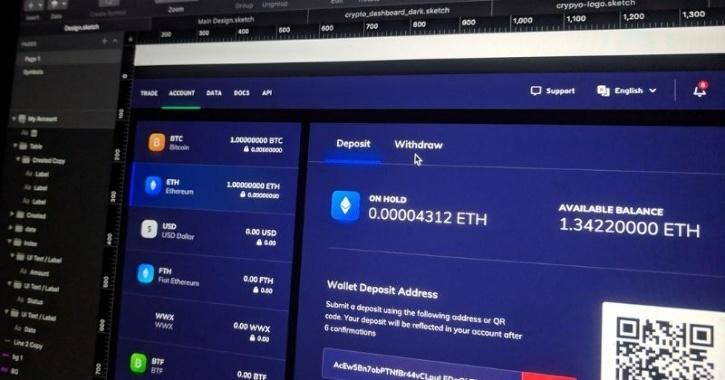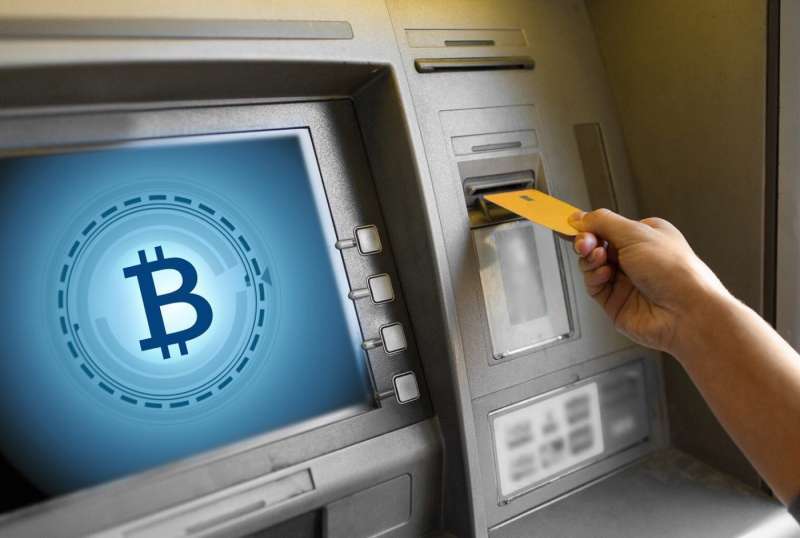Latest News
- IMF And World Bank Align On Kuwait's Economic Growth
- Nepalese Domestic Worker Commits Suicide
- Traffic Light Labeling For Packaged Foods Unveil By Kuwait
- Nazaha Unveils 49 Forged Certificates In 5 Years
- One Injured And Two Killed In An Abdali Road Accident
- Finance Ministry Approves ‘Afiya 4’ Health Insurance Tender With...
- KOC Clinches 63 Rig Contracts Worth $670 Million
- MoE Approves 169 Committees To Test 40,000 High School Students...
- Municipality Launches Campaign Against Unauthorized Car Awnings...
- Civil Service Commission Observes 170 Violations Across Ten Gove...
- Ministry Of Trade And Industry Cracks Down On Grill Pan Weight T...
- Ministry Of Health Considers Fingerprint System For Primary Heal...
Risk In Bitcoin And Cryptocurrency Trading: A Financial Risk Expert Explains

Indian investors, especially Gen Z, have been quick to catch on to cryptocurrency, triggered by incidents including last year’s Gamestop-Reddit Buzz, Elon Musk’s endorsements and celebrity promotions for Indian apps. Undeterred by concerns about its long-term viability as an investment instrument or the current regulatory landscape, India now has over 15 million cryptocurrency investors, according to the Internet and Mobile Association of India (IAMAI).
The recent surges in the value of popular cryptocurrencies such as Bitcoin, Ether and Dogecoin have added to the spike in interest for digital currencies as a viable investment opportunity. Ease of doing transactions (e.g., ‘one-click transactions’ available via local apps), access to international trade and confidentiality are additional aspects that are attracting young investors to trade in cryptocurrencies.

However, the risk of fluctuating valuation is concerning because investors are potentially exposed to huge losses. Bitcoin, for instance, went from a record high in April to an almost four-month low in May, with its value dropping by nearly 50%. Ether, too, plummeted nearly 57% over one week in May, its lowest valuation since January.
While there might be many benefits and compelling stories associated with crypto-trading, investors must also be attentive to the risks associated with such digital money. What are cryptocurrencies and how do transactions work for these instruments? What gives them value, and how do they compare to traditional financial investments?
Risk managers all over the world are studying risks posed by cryptocurrencies, and the aspects that need to be kept in mind while considering investment opportunities. Indeed, before allocating any money to cryptocurrencies, investors must be mindful of their usefulness for conducting transactions, the weaknesses of crypto infrastructure, and the sources of changes in the value of these assets. Ultimately, this knowledge will help cryptocurrency investors properly assess their potential gains and losses.
What is Cryptocurrency?
A cryptocurrency is a form of digital money. Cryptocurrencies run on a decentralized network, which allows them to exist outside the control of central authorities. Transactions can be cleared with no trusted third party standing between payor and payee, and are designed to ensure that the payor has the funds and that each transaction is completed.
Bitcoin is the most widely known cryptocurrency, and the one with the largest total value. It is a fiat currency, meaning it is not linked to anything with intrinsic value and is not legal tender in just about every country, with the recent exception of El Salvador. Therefore, Bitcoin has value only where individuals and firms choose to accept it in exchange for other things (such as dollars or Indian Rupees).

Many cryptocurrency devotees presume that national money is “fiat money” and that cryptocurrencies are something else. This is not true. Any money is fiat money if not backed by other assets with intrinsic value, including cryptocurrencies. Stablecoins are not fiat money, except those backed by national fiat money (something backed only by fiat money must itself be fiat money).
The number of Bitcoins is growing slowly and cannot exceed about 21 million. With nearly fixed supply, Bitcoin’s value may increase over time if demand for it grows, but its value may also go to zero at any time if individuals and firms stop accepting it in exchange for goods and services or other forms of money.
How Cryptocurrencies Work
In a Bitcoin transaction on the native Bitcoin network, the payor submits a transaction to the Bitcoin network using the payor’s private ID (“private key”). The transaction record specifies the number of Bitcoins to transfer (which may be a fraction), the payor’s public ID, the payee’s public ID, and some other information.
The transaction is validated and transmitted throughout the Bitcoin network by many operators of Bitcoin “nodes.” A Bitcoin “miner” aggregates several transactions into a “block,” and then performs costly computations to gain the right to post the block to the Bitcoin distributed ledger, which is simply a compilation of all previous transactions.

Validation involves using the ledger’s history to verify that the payor possesses the specified amount of Bitcoin and that all aspects of the transaction conform to the rules of Bitcoin. Crucial to the integrity of Bitcoin is that a miner will receive no value for blocks that contain an invalid transaction (and, thus, will have wasted their computational resources). Operators of nodes that transmit invalid transactions are likely to be delinked from the network by other node operators, losing the informational advantages that accompany node operation.
No entity stands between the payor and payee in a transaction on the Bitcoin network, and the identity of both remains confidential; there are no Bitcoin “accounts” and participants are difficult to trace. This also makes it a popular method of payment for those engaged in illicit activity. However, if a participant loses knowledge of his or her private key, their Bitcoin holdings cannot be accessed and are essentially lost.
Recently, perpetrators of the Colonial Pipeline ransomware attack in the U.S. received payment in Bitcoin, but law enforcement authorities were able to recover some of the payment. Though details of methods have not been publicized, this could only be done if the authorities gained knowledge of one or more private keys. This sometimes might be possible by tracking IP addresses from which transactions originated.
Many service providers have emerged to enable participants to operate in a more familiar account-based setup: some provide “wallets” that store the private ID, some verify a participant’s identity, and some provide interfaces that allow participants to trade Bitcoin without understanding the details of a valid transaction. Many of the latter are exchanges that allow a client to exchange one digital currency for another or for national money.
The combined ecosystem of service providers has grown to the point that some institutions are willing to participate in transactions or to offer digital-currency-related products such as cryptocurrency investment funds. Interestingly, more Bitcoin transactions occur on platforms of service providers than on Bitcoin’s native network.
The legality of the currency depends on the country in which the account is made. Investing in cryptocurrencies is now allowed, for example, in India.
In March 2020, the Supreme Court of India struck down a cryptocurrency transactions ban that had been originally implemented by the Reserve Bank of India (RBI). However, while millions of Indians are experimenting with virtual currencies (buying them, mainly, via online apps), RBI and the central government still do not seem to be in favor of cryptocurrency trading, citing risks of financial instability and money laundering.
Risks for Investors
Risks associated with digital currencies can vary for different stakeholders within the trading cycle, including financial institutions, non-financial firms, and investors at large. From an investor point of view, the biggest threat is the investment risk, meaning risk of loss of value of the digital currency itself, which is borne by any investor in digital currencies.
Cryptocurrencies have no fundamental value, and therefore could drop to zero at any time.

Some people and firms attach a positive probability to one or more cryptocurrencies substantially replacing national money in transactions. However, a major barrier to replacement of national money is that cryptocurrencies are usually a more expensive means of conducting a transaction than most national currencies (taking together the costs borne by both parties to the transaction). Consequently, there is little incentive for most private parties to use cryptocurrencies.
If costs of cryptocurrency transactions do not fall substantially, eventually claims that cryptocurrencies will replace national money will lose credibility and this source of value will be much weaker – at least in nations with well-functioning monetary and financial systems like India.
Investment Risks compared to Traditional Assets
A firm or individual that includes cryptocurrencies in its portfolio obviously loses if the value of such instruments falls a lot. This is normal investment risk, but the novelty of the instruments makes assessment of such risk more challenging than in the case of conventional assets.

In addition, expected returns are difficult to estimate, so the risk-return tradeoff is difficult to evaluate. Past performance is not necessarily a reliable guide to the future.
Other risks
Ownership of cryptocurrencies is unenforceable in court, so an investor has no recourse if their cryptocurrency is stolen or lost. Similarly, an investor typically has no legal recourse if transactions are completed on terms that differ from those to which they agreed.
The tax status of cryptocurrencies might change, and varies by country. In absence of proper regulations in India, it is still unclear whether it is a currency or commodity. While profits gained by investing in cryptocurrencies are subject to an Indian capital gains tax, reporting requirements are still unclear.

Moreover, poor-quality data about cryptocurrencies complicates the task of optimizing investments. For example, much of the volume on cryptocurrency exchanges is reportedly not between arm-length parties, and transaction volumes therefore are reportedly overstated.
Some of the abovementioned risks are familiar as they are common to other instruments or businesses. However, peculiar threats – like risks to the continued existence of cryptocurrencies – are less familiar. As always, an investor should be alert to the risks that affect their portfolios and businesses – and should develop new ways to manage such risks.
About the Author
Mark Carey is co-president of GARP Risk Institute. In this role, he helps lead research and thought leadership for the Global Association of Risk Professionals (GARP) – a membership organization focused on elevating the practice of risk management and that offers role-based risk certification, the Financial Risk Manager (FRM) – and the broader risk community. Prior to joining GARP, he was associate director in the Division of International Finance at the Federal Reserve Board in Washington, D.C., leading some of the Board’s work on issues related to the financial services industry, systemic risk and the financial crisis. He has written many technical papers on credit risk and corporate finance.

Open an Account for free on Largest Crypto Currency Exchange - Binance
Trending News
-
 Eid Al Fitr 2024: Crescent Moon Not Sighted In Sau...
08 April 2024
Eid Al Fitr 2024: Crescent Moon Not Sighted In Sau...
08 April 2024 -
 Kuwait Implements Home Biometrics Services Ahead O...
14 April 2024
Kuwait Implements Home Biometrics Services Ahead O...
14 April 2024 -
 When Will Eid Al Fitr 2024 Take Place In Qatar, Ba...
08 April 2024
When Will Eid Al Fitr 2024 Take Place In Qatar, Ba...
08 April 2024 -
 On Sunday, The Meteorological Department Warns Of...
07 April 2024
On Sunday, The Meteorological Department Warns Of...
07 April 2024 -
 Kuwait Airways Provides Update On Flight Schedule...
14 April 2024
Kuwait Airways Provides Update On Flight Schedule...
14 April 2024 -
 Winners Of Kuwait National Assembly 2024 Elections
06 April 2024
Winners Of Kuwait National Assembly 2024 Elections
06 April 2024 -
 Kuwait Airways Introduces Convenient Home Luggage...
15 April 2024
Kuwait Airways Introduces Convenient Home Luggage...
15 April 2024 -
 Gathering For Eid Al-Fitr Prayers: Kuwaiti Citizen...
10 April 2024
Gathering For Eid Al-Fitr Prayers: Kuwaiti Citizen...
10 April 2024 -
 Transforming Kuwait's Public Transport: The Digita...
07 April 2024
Transforming Kuwait's Public Transport: The Digita...
07 April 2024 -
 Court Awarded Engineer KD24,00 For Unpaid Salaries
09 April 2024
Court Awarded Engineer KD24,00 For Unpaid Salaries
09 April 2024












Comments Post Comment